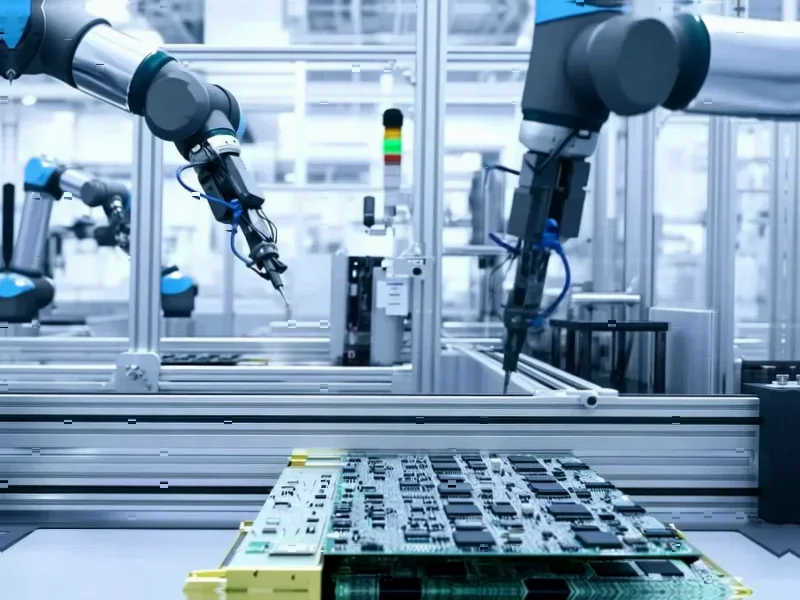According to CNBC, Qnity Electronics began trading on the New York Stock Exchange on Monday, November 3, 2025, following its spinoff from DuPont. The stock gained over 2% in its debut, closing around $97 per share, while Jim Cramer immediately endorsed the company, stating his Charitable Trust holds a 2.04% position but “we don’t own enough.” Qnity derives more than 65% of its portfolio from semiconductor solutions and forecasts the global semiconductor market will grow from $740 billion currently to $1.3 trillion by 2030, driven largely by AI data center demands. CEO Jon Kemp revealed that approximately 15% of current sales already come from AI data centers, with the company maintaining partnerships with industry giants including Nvidia, Taiwan Semiconductor, and Samsung. Multiple analysts initiated coverage with buy ratings, including Wolfe Research setting a $110 price target. This strategic separation positions Qnity to capitalize on semiconductor growth without being weighed down by DuPont’s diversified industrial businesses.
The Materials Advantage in AI Infrastructure
What makes Qnity particularly compelling isn’t just its semiconductor exposure but its specific position in the materials and chemicals supply chain. While most investor attention focuses on chip designers like Nvidia or manufacturers like TSMC, the foundational materials required for advanced semiconductor production represent a critical bottleneck. Companies like Qnity provide the essential chemicals, polymers, and specialty materials needed for semiconductor fabrication processes, creating a high-margin business with significant barriers to entry. The materials segment typically enjoys more stable pricing power than commodity semiconductor components, as switching suppliers requires extensive requalification processes that chip manufacturers are reluctant to undertake once production lines are established.
Strategic Rationale Behind the Spinoff
The separation from DuPont follows a broader trend of industrial conglomerates unlocking value by spinning off focused technology businesses. Similar to how DuPont previously separated its agriculture business as Corteva, the Qnity spinoff allows both entities to pursue distinct strategies with appropriate capital allocation. For Qnity, this means aggressive investment in semiconductor R&D without competing for capital against DuPont’s more mature industrial segments. The pure-play structure also enables Qnity to attract semiconductor-focused investors who might have avoided the combined entity due to DuPont’s exposure to slower-growth markets like water solutions and healthcare materials. This specialization premium is already evident in the market’s initial valuation response.
AI Data Center Infrastructure Implications
Qnity’s revelation that 15% of current sales derive from AI data centers underscores how the AI infrastructure buildout extends far beyond GPUs and servers. The materials required for advanced packaging, thermal management, and interconnect technologies are becoming increasingly sophisticated as AI workloads demand more powerful and efficient chips. This creates a compounding growth effect – not only are more chips needed, but each generation requires more advanced materials. The transition to 3D chip stacking, heterogeneous integration, and advanced node manufacturing all depend on specialized materials that companies like Qnity develop. As AI models grow exponentially larger, the materials science behind keeping these systems operational becomes increasingly valuable.
Competitive Landscape Considerations
While Qnity benefits from first-mover advantage through its DuPont heritage, the semiconductor materials space faces intensifying competition from Asian suppliers and specialized chemical companies. Japanese firms like Shin-Etsu Chemical and South Korea’s LG Chem have been aggressively expanding their semiconductor materials portfolios, particularly targeting the advanced packaging segment. Qnity’s success will depend on maintaining its technological edge while navigating geopolitical considerations, as semiconductor supply chains become increasingly regionalized. The company’s established relationships with major chip manufacturers provide a defensive moat, but continued innovation will be essential as next-generation chip architectures demand entirely new material solutions.
Investment Thesis and Inherent Risks
The bullish case for Qnity rests on multiple growth vectors converging simultaneously: the AI boom, semiconductor market expansion, and its newfound independence as a focused entity. However, investors should consider several risk factors, including the cyclical nature of semiconductor capital expenditure, potential inventory corrections, and the capital-intensive requirements of materials R&D. The company’s heavy reliance on the semiconductor industry (65%+ exposure) creates concentration risk if the sector experiences one of its periodic downturns. Additionally, as a newly independent entity, Qnity must prove it can operate efficiently outside DuPont’s corporate infrastructure while maintaining the R&D investment needed to stay ahead in this rapidly evolving field.
Broader Market Implications
Qnity’s successful debut signals continued investor appetite for pure-play technology companies positioned to benefit from structural growth trends. The market’s positive reception suggests that despite concerns about AI valuation bubbles, investors remain willing to pay premiums for companies with clear exposure to authentic technology transformation. This could encourage other industrial conglomerates with buried technology gems to consider similar separations. For semiconductor investors, Qnity provides a previously unavailable way to gain exposure to the materials segment of the supply chain, completing the investment universe alongside chip designers, equipment manufacturers, and foundries.




